Local SEO can be tricky, and there are a lot of blog posts and different articles out there with varying levels of expertise and experience behind some of the advice.
There are also some great studies out there, based on data, such as the Moz local ranking factors studies (2018). In this article, I’ve asked the wider SEO community their take on how important five common local SEO optimization tactics are.
We surveyed 147 SEO professionals to ask them their opinion on:
- Optimizing your Google My Business listing
- Making use of the Google Posts feature
- Getting positive Google My Business reviews
- Performing local SEO focused optimizations on the client website
- Whether or not having active and strong social profiles for the business impacts local search
- Whether or not directory listings and citations are still important
Things like the proximity of the searcher to the business location do still play a part, but it’s not really something we can optimize for – especially if the client’s location is outside of a major town/city or in a crap location.
The five above optimization tactics were rated on a simple scale, this being:
- Very important
- Somewhat important
- No real opinion
- Not important
Why Does This Matter
The local SEO landscape is changing, and now Google is starting to monetize Google My Business listings, changing the landscape and dynamic even further.
Obviously, in all cases, there is an element of it depends, as competition levels differ fiercely and what’s required to be prominent within local search varies.
Therefore, I would take the below data and opinions as an indicator of general practice, and what experienced SEO professionals are seeing work out in the field when optimizing their clients for local intent search terms.
⃟◈⃟
Optimizing Your Google My Business Listing
To stand a chance of appearing in the Map Pack, and for local queries (especially on mobile) this feature takes up serious amounts of SERP real estate.
It’s therefore not surprising that 88.4% of respondents (surprised it’s not higher) see it as a very important factor in local SEO.
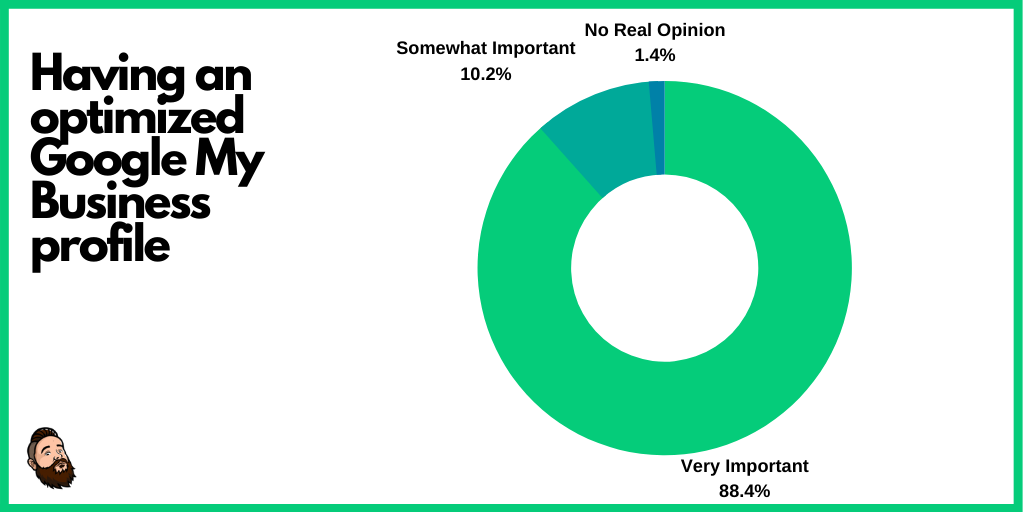
Further reading on optimizing your Google My Business listing can be found here:
- https://www.searchenginejournal.com/local-seo/optimize-google-my-business/
- https://www.wordstream.com/blog/ws/2020/06/03/google-my-business-optimization
- https://salt.agency/blog/why-an-accurate-google-my-business-listing-is-vital/
Using Google Posts
Google Posts was a feature launched in 2018, and has had both mixed usage and reaction from the SEO community.
In early 2020 Google announced a new Post type specifically for COVID related announcements which saw a lot of uptakes, but outside of that it’s not overly common.
This is in part down to management, and if you’re running a number of locations the Google My Business UI isn’t the most… efficient. There are tools that exist to allow mass posting of Google Posts and scheduling functionality, but with the ROI still heavily debated, and that these tools aren’t the cheapest, a number of organizations are skeptical about investing in them.
This uncertainty is reflected within the responses, with 51% feeling Google Posts are somewhat important, and only 17% seeing them as being very important.

From my personal experience, using Google Posts regularly did correlate with an increase in Google My Business impressions and clicks for a large national chain in the UK, but this activity was coupled with others – so there’s no direct eureka moment.
Getting Directory Listings & Citations
Directory listings and citations, the local link building, has some importance with 76.8% responding that it holds some value.
In my opinion, generating these links and citations contributes to a wider element of NAP optimization, creating clearer signals for Google (and other search engines) to be confident in the information being put forward.
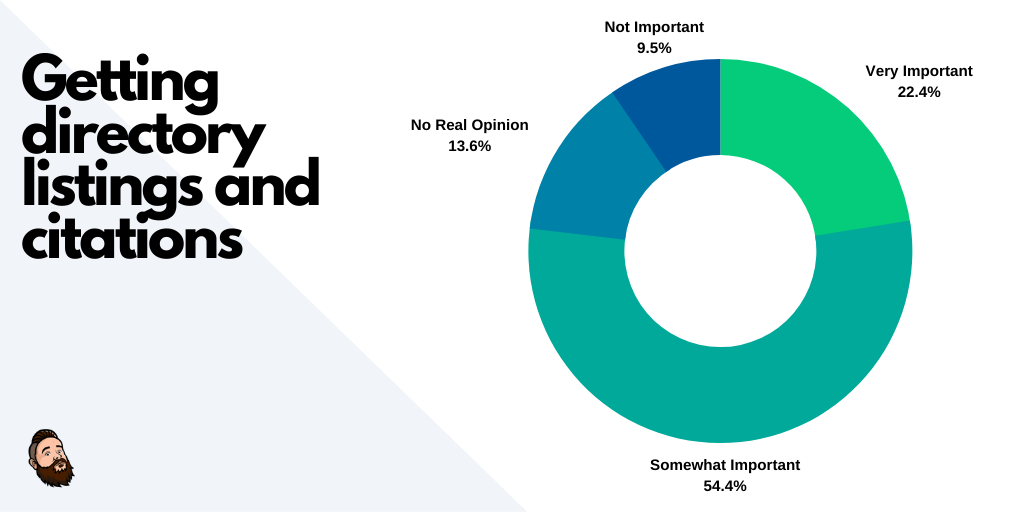
NAP Consistency
NAP stands for Name, Address, and Phone Number, and having this consistent across all web assets and third-parties is thought of being important to local SEO.
This causes complications when you’re a large organization running different phone numbers through something like ResponseTap or Twilio so you can attribute calls to different marketing channels – so the number will be different everywhere.
Getting Positive Google My Business Reviews
Positive reviews are not only important for building trust and user conversion but as the survey results show pretty much every respondent believes they add value to how well GMB listings perform.
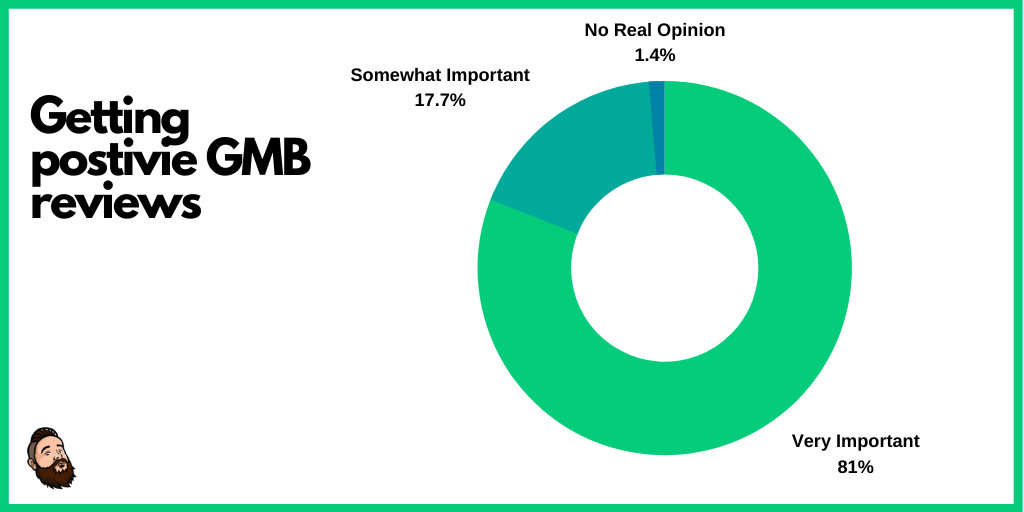
Performing Local Focused SEO On The Client Website
Moving away from Google My Business, another tactic for both SEO and better user experiences is to make sure users can easily find location details via your website.
This is sometimes overlooked, but optimizing both the Google My Business listing and your website gives you the opportunity of ranking in both the Map Pack and within localized blue link results.
It also means that users who come to your site via non-local specific queries, perhaps specifically focused on the products/services can navigate to and find a local store (that belongs to you) without leaving your website and running the risk of having a competitor hijack the journey.

The importance of this is shown with 81% seeing it as being very important, and 16.3% as somewhat important.
Having A Strong Social Media Presence
The direct/indirect impact of a company’s social media presence on SEO performance is something that has always been debated, and the respondents to this survey reflect this with an almost 50/50 split of importance.
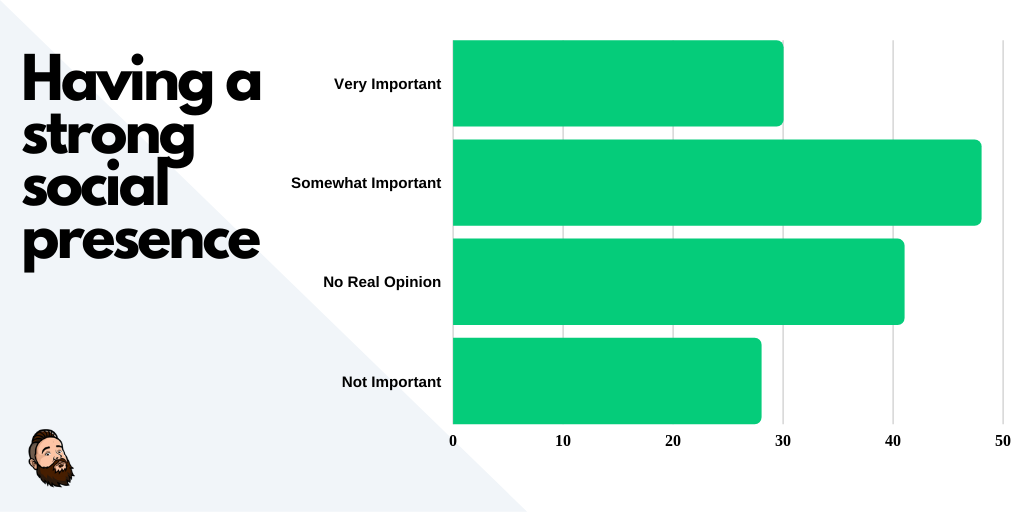
Typically a brand doing multi-channel marketing with good levels of customer service, that also does PR and consciously works on the brand will tend to have a social media following of some size, and this investment also likely means users seek out the brand.
As a result, yes, real businesses who invest in marketing tend to have a recognized brand and a social media following.
Getting a big social media following isn’t a tactic, is a correlative symptom of doing everything (from marketing to customer service and having a good product) right, with community management then thrown into the mix. It’s not causational and doesn’t cause you to be better.
If you want lots of social media followers, just go to Fiverr.
⃟◈⃟
The Respondents
A total of 147 SEO professionals responded, giving their thoughts on what works and what doesn’t work when it comes to optimizing for local search phrases.
The average number of years the SEO respondents have been in the industry varied between 1 and 27, with an average of 8.19 years.
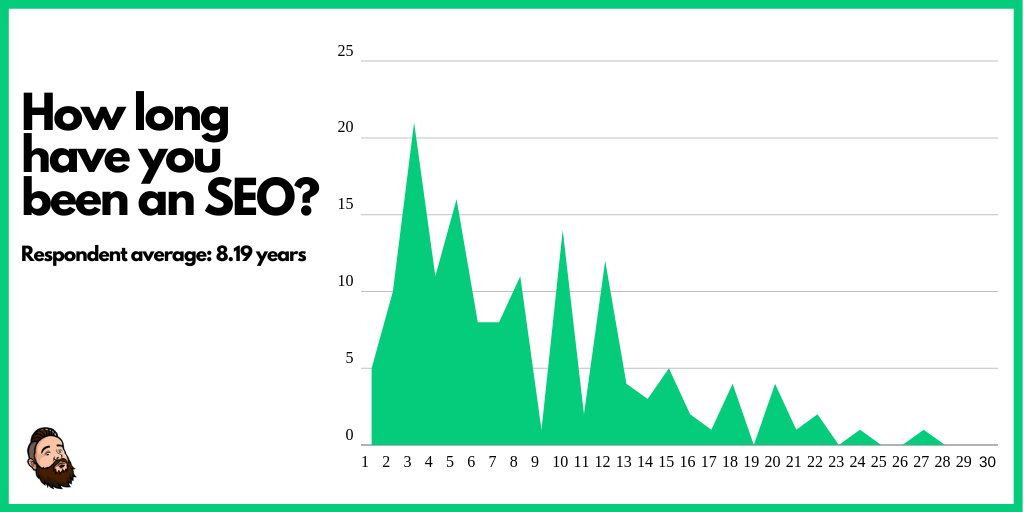
In terms of job title, 9.5% aligned with being an SEO executive, whilst 19.7% aligned with being an SEO director. SEO Manager saw the largest number of respondents with 26.5%.
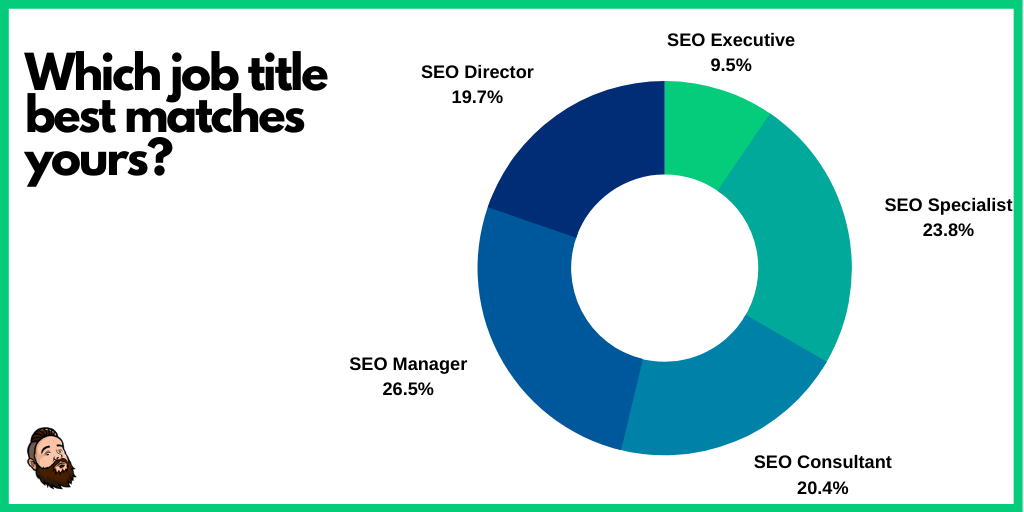
In terms of where people worked, 53% of respondents currently work within agencies, and the remaining 47% slip fairly equally between working in-house and working as freelance SEOs.
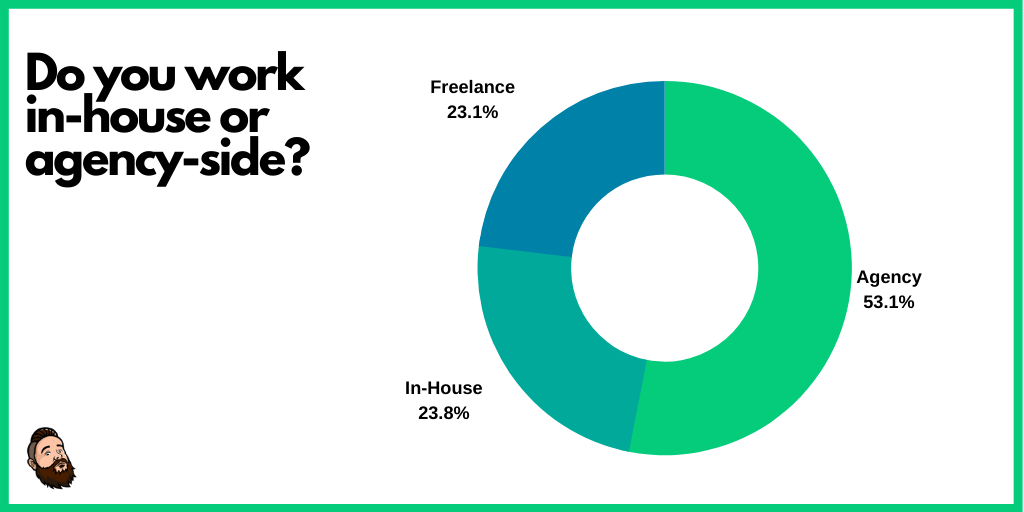
This data was collected via an anonymous Google Form in July 2020.
The original plan was to include attribution links to those who completed the survey, but unfortunately, this question was hijacked on the survey.
⃟◈⃟
Further Reading
If you’re wanting to read up more on local SEO or look to optimize your own presence, I recommend the following places to continue learning from:
- Sterling Sky Blog – Joy Hawkins et al answer questions around local SEO that many people either don’t ask or are afraid to ask, and they do so in a data-driven way.
- Search Engine Journal Guide To Local SEO – 10 chapters of greatness curated by some wonderful SEOs.
- Near Me SEO Ranking Factors Study by Local SEO Guide – A couple of years old now, and authored by Dan Leibson, this a great piece.
- Google – Improve your local ranking on Google